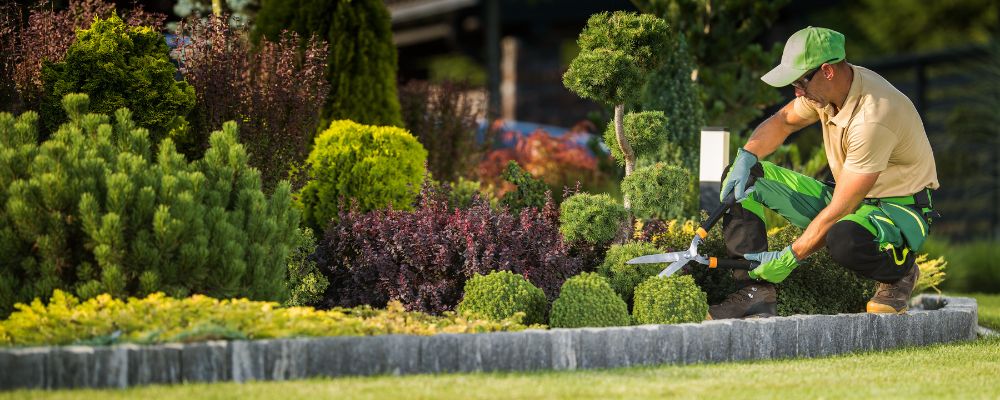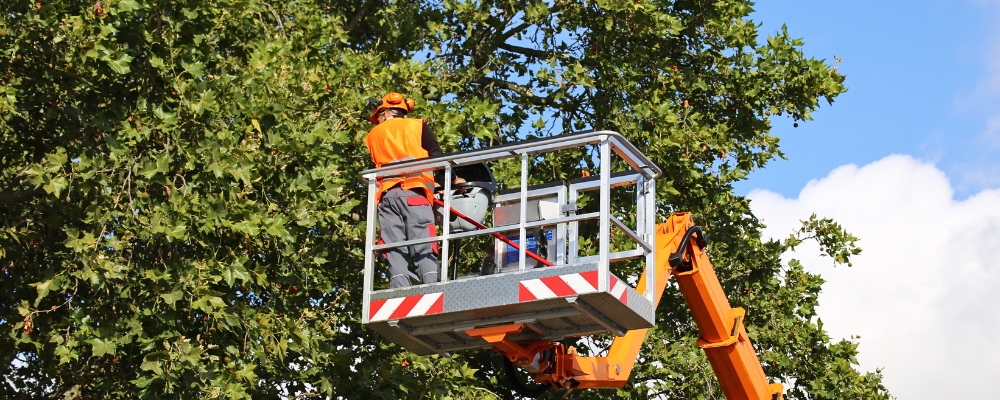Orange County property owners are discovering that maintaining beautiful outdoor spaces in Southern California requires specialized expertise that goes far beyond traditional lawn care. The region’s Mediterranean climate with its bone-dry summers, unpredictable rainfall, and escalating water costs has made smart landscape maintenance a necessity, not a luxury.
Growscapes provides comprehensive maintenance services designed specifically for Orange County’s environmental conditions. Our approach demonstrates that effective landscape maintenance is about creating resilient outdoor spaces that thrive sustainably while reducing long-term costs and environmental impact.
The Science Behind Water-Smart Landscape Maintenance
Recent research has transformed our understanding of how landscapes can function as water conservation tools. Field research studies indicate that certain trees, shrubs, and groundcovers have considerable drought resistance and perform acceptably with about 40% to 60% of the water required to maintain the average lawn in good condition. This finding challenges the assumption that beautiful landscapes must consume excessive water.
California-specific data reveals even more dramatic potential. Once settled-in, native plants can require up to 85 percent less water than traditional landscaping plants, making them a natural choice for conscientious Californians. For Orange County properties, this translates to substantial water bill reductions while maintaining, or even improving, curb appeal.
Additionally, the extensive root systems of native plants stabilize the soil, preventing erosion. This is especially important in areas prone to runoff, where soil and nutrients can wash away, leading to water quality issues.
Orange County’s Unique Maintenance Challenges
Understanding regional specifics is crucial for effective landscape maintenance. Orange County presents distinct challenges that generic approaches simply cannot address:
Microclimate Variations: What flourishes in Laguna Beach’s misty mornings may wither in Yorba Linda. Orange County spans from coastal areas with marine influence to inland valleys with desert-like conditions. Each zone requires different maintenance strategies and plant selections.
Water Restrictions: Ongoing drought conditions and municipal water limitations demand maintenance approaches that work within strict usage guidelines while maintaining property aesthetics.
Soil Conditions: Near the coast, sandy earth drains quickly, demanding frequent but light attention. Inland, clay soils require deeper, but less frequent care. Reading soil correctly means the difference between plants that struggle and those that flourish.
Fire Safety Considerations: Defensible space requirements and fire-resistant landscaping add another layer of complexity to maintenance planning. The challenge is creating landscapes that meet safety standards while still looking good and functioning well for daily life.
Evidence-Based Maintenance Strategies
Modern landscape maintenance should be guided by research rather than tradition. Key approaches include:
Strategic Plant Replacement and Care
The most effective maintenance programs gradually transition properties toward sustainability. This involves identifying high-water plants that struggle in Orange County’s climate and replacing them with better-adapted alternatives during routine maintenance cycles.
As a rule, native plants are considered more drought tolerant than non-native plants. While this is not always true, native plants are often more adapted to or tolerant of local growing conditions and this can help with water conservation. However, the transition must be managed carefully.
Keep in mind drought tolerant plants perform best once they have well-established root systems. It is important to provide new plants with adequate moisture until they establish roots. This may take one to three years.
Irrigation System Optimization
Regular system maintenance and smart technology integration can dramatically improve water efficiency. Correcting these problems can reduce water use by 10% or more, improve the uniformity of water application, and likely improve the health of plantings. Simple fixes like repairing leaks and adjusting spray patterns often yield immediate results.
Soil Health Management
Healthy soil is the foundation of water-efficient landscapes. Native plants contribute to healthier soil by promoting microbial diversity and improving soil structure. This helps retain moisture further enhancing water conservation. Proper soil management reduces the need for both water and chemical inputs.
The Maintenance Program That Works Long-Term
Successful Orange County landscape maintenance requires a systematic approach that addresses immediate needs while building toward sustainability. The most effective programs focus on:
Seasonal Adaptation: Orange County’s distinct wet and dry seasons require different maintenance approaches throughout the year. Winter preparation involves different priorities than summer stress management.
Preventive Care: Addressing issues before they become problems reduces both costs and environmental impact. Regular plant health monitoring, pest identification, and system checks prevent expensive emergency interventions.
Educational Partnership: The best maintenance services educate property owners about their landscape’s needs and potential improvements, creating informed partnerships rather than simple service transactions.
How Growscapes Delivers Science-Based Maintenance
Growscapes combines local expertise with evidence-based practices to provide Orange County’s most effective landscape maintenance services. Their approach addresses the specific challenges of regional climate, soil conditions, and water restrictions.
Customized Regional Programs: Every property receives maintenance tailored to its specific microclimate, soil conditions, and exposure. This localized approach ensures that care matches actual conditions rather than generic assumptions.
Water Conservation Integration: All maintenance activities prioritize water efficiency without sacrificing beauty. From irrigation audits to plant health management, every service component supports long-term sustainability.
Transition Planning: For properties seeking greater sustainability, Growscapes develops phased improvement plans that upgrade landscapes gradually, minimizing disruption while steadily reducing water usage and maintenance requirements.
Professional Expertise: Their team understands Orange County’s unique conditions, from coastal salt exposure to inland heat stress. This knowledge ensures that maintenance decisions support rather than fight against natural conditions.
Investment in Property Value and Environmental Stewardship
Professional landscape maintenance represents an investment in property value, environmental responsibility, and long-term cost control. Well-maintained landscapes that incorporate sustainable practices provide lasting benefits that extend far beyond simple aesthetics.
For Orange County property owners ready to embrace maintenance practices that combine beauty, sustainability, and cost-effectiveness, Growscapes offers the expertise and commitment needed to achieve these goals. Their comprehensive approach ensures that your landscape receives the specialized care it needs to thrive in Southern California’s unique environment.
Frequently Answered Questions
How frequently should Orange County landscapes receive maintenance?
Maintenance frequency depends on plant types, season, and specific site conditions. Most properties benefit from weekly or bi-weekly visits during active growing periods, with reduced frequency during dormant seasons. Professional services customize schedules based on your landscape’s specific needs and your budget requirements.
Can existing landscapes be made more water-efficient through maintenance alone?
Yes, significant water savings are possible through improved maintenance practices. System repairs, proper timing adjustments, and gradual plant replacements can reduce water usage substantially while maintaining or improving appearance. Many properties achieve 30-50% water reductions through better maintenance alone.
What makes Orange County landscape maintenance different from general gardening?
Orange County’s Mediterranean-like climate, diverse microclimates, and water restrictions require specialized knowledge. Effective maintenance must account for seasonal rainfall patterns, varying soil types, fire safety requirements, and municipal regulations that don’t apply in other regions.
How do I evaluate the quality of landscape maintenance services?
Look for providers who understand local climate conditions, demonstrate knowledge of water-efficient practices, and offer customized rather than generic service plans. Quality services should include regular communication about your landscape’s condition and suggestions for improvements.
What role does soil health play in landscape maintenance?
Healthy soil is fundamental to water-efficient landscapes. Proper soil management improves water retention, reduces fertilizer needs, and supports stronger plant growth. Quality maintenance programs include soil assessment and improvement as core components rather than afterthoughts.






